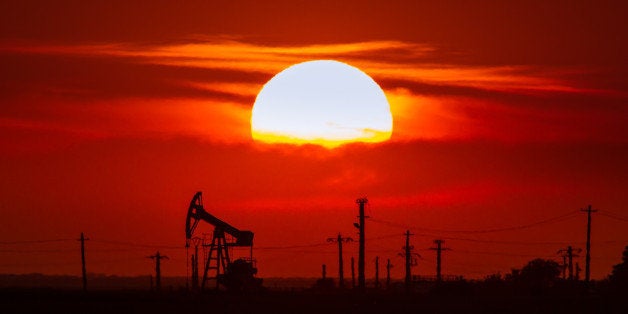
Last month, Climate Central's Brian Kahn reported
"In the centuries to come, history books will likely look back on September 2016 as a major milestone for the world's climate."
Kahn was referring to news that in a month when we would expect to observe the lowest concentration of carbon dioxide (CO2) in our atmosphere over the year, the Earth's atmospheric CO2 concentration remained over 400 parts per million (ppm).
To many, 400 ppm is just a number and this news appears insignificant, but to those who follow climate science 400 ppm is an ominous milestone. That number has risen exponentially since the Industrial Revolution, before which our atmosphere contained just 275 ppm of CO2.
I was born when the Earth's atmospheric CO2 concentration was approximately 337 ppm. At the time, climate change was just becoming a global concern. In 1979, the first World Climate Conference was held in Geneva where climate scientists came together call on Governments for the first time to "foresee and prevent potential man-made changes in climate that might be adverse to the well-being of humanity."
Less than a decade later, in 1988, the Earth's atmosphere exceeded 350 ppm of CO2. Another decade after that, as CO2 reached 385 ppm, Bill McKibben launched the international organization 350.org to pressure world leaders to reduce atmospheric CO2 to 350 ppm to slow the rate of global warming. The 350 limit came from peer-reviewed research by NASA scientist Dr. James E. Hansen, who defined 350 ppm as the upper limit "to preserve a planet similar to that on which civilization developed and to which life on Earth is adapted". In May 2012, atmospheric CO2 crossed 400 ppm in the Northern Hemisphere's Arctic region for the first time and was eventually observed at the South Pole in June of this year.
Atmospheric CO2 concentration correlates with Earth's surface temperature, making it a useful indicator of future global warming, but CO2 concentration is a metric that can be lost on the public. Four-hundred parts of carbon dioxide per million parts of air may not sound ominous, but the last time the Earth experienced CO2 concentrations at this level was 3.6 to 2.2 million years ago, long before modern humans appeared just 200,000 years ago.
Technically, 400 ppm is no more significant than 399 ppm or any observation in recent years. Rather, 400 ppm is symbolically significant, representing a point of no return. It is now almost certain atmospheric CO2 concentrations will never go below 400 ppm in our lifetime or even our great-grandchildren's lifetime. A molecule of carbon dioxide can persist in the atmosphere for centuries. -Much of the carbon we have extracted from the ground, burned and released into our thin atmosphere is there to stay long after we are gone.
Our actions since the Industrial Revolution have warmed the Earth over one degree Celsius above pre-industrial temperatures, and a lag time between the burning of fossil fuel and the Earth's response have locked in at least another half a degree of warming to come.
The next unfortunate milestone for our atmosphere is 405 ppm, a concentration Prof. Michael Mann says we will reach by 2036 if we continue to burn fossil fuels at our current rate. At 405 ppm of atmospheric CO2, we can anticipate a warming of two degrees Celsius above pre-industrial temperatures, the upper limit which 195 countries committed to stay below as part of the U.N. Climate Agreement. When the Earth's average surface temperature reaches between 1.5 and 2 degrees of warming above pre-Industrial temperatures, UNFCCC reviewed science predicts heat and weather extremes, water shortages, failing crop yields, sea level stresses, and changes in ocean chemistry leading to widespread immigration, conflict and human suffering.
When Bill McKibben wrote in 2007 that 350 was "the number that may define our future", he reassured us that we were not yet doomed having already exceeded it. "Not any more than your doctor telling you that your cholesterol is way too high means the game is over", he consoled. We've been sitting on the couch eating greasy chips for almost four decades since that first doctor's diagnosis and now our days are numbered.
Like the grains of sand in an hour glass, 400 grains now sit at the bottom of the glass while just five grains remain at the top. The Earth's 400 ppm of atmospheric CO2 is a stark reminder of how little time we have left to act on climate and end our dependency on fossil fuels.
